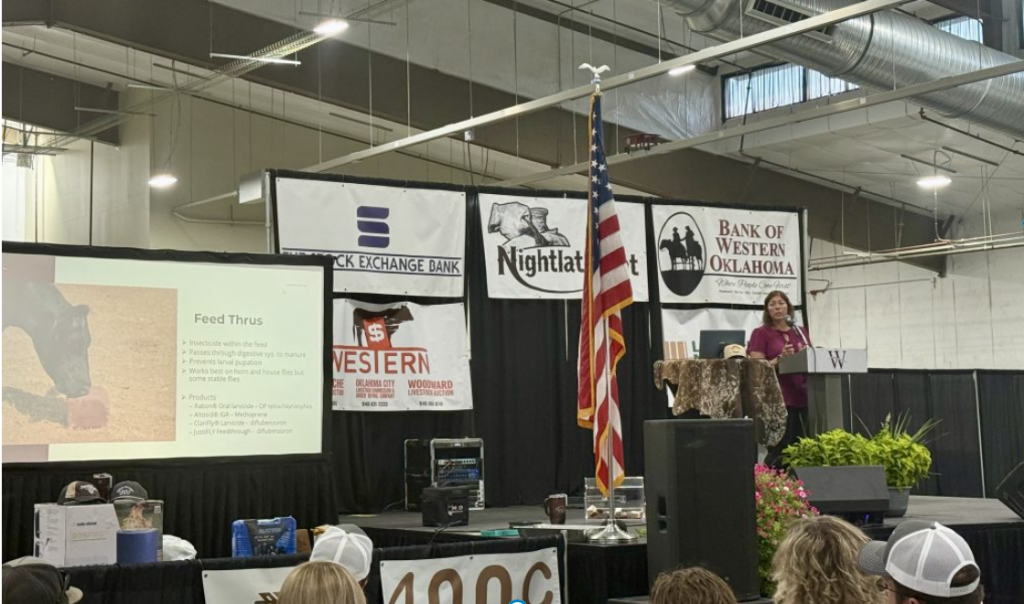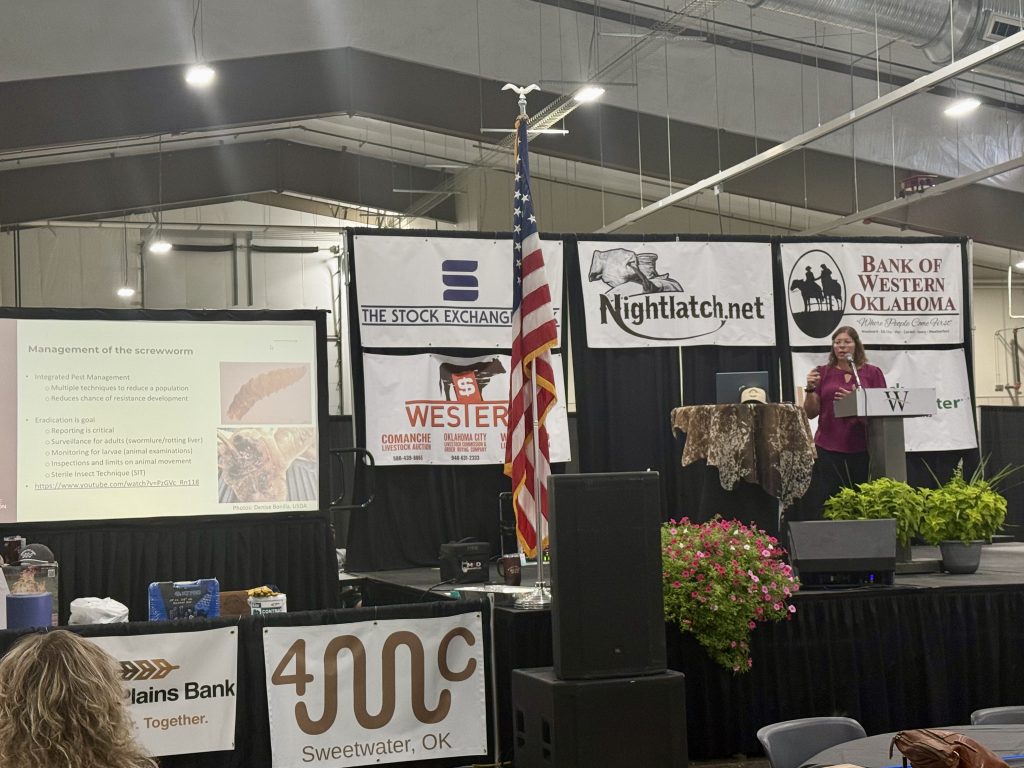
Listen to Dr. Swiger and Karleigh’s conversation above!
Oklahoma producers gathered valuable insight last week as Dr. Sonja Swiger, an entomologist at Texas A&M AgriLife Extension, highlighted strategies for fly control and shared historical lessons about the notorious New World Screwworm with Oklahoma Farm Report Intern, Karleigh Erramouspe.
Dr. Swiger began by addressing the impact of excessive fly populations on cattle health and behavior, emphasizing that the most significant concern is not the direct transmission of disease, but the disruption of normal animal behavior due to biting. She explained, “One of the biggest concerns is going to be the fly biting will cause the cattle to be, you know, angry and upset and disrupt their normal behavior… those over high pressures of those flies on the cows can make mama not want to feed regularly or as much as she should be, and then, you know, she’s not producing as much milk.”

She identified the horn fly as the predominant pest Oklahoma farmers should monitor. Horn flies, often found around the head, back, shoulder, and belly of cattle, can proliferate rapidly if untreated. When asked about management, Dr. Swiger stressed the importance of innovation and consistent effort,“Being innovative is one of the things, right? But really it’s just taking initiative, using the available products…and following the labels…But it is long-term. It’s not something you do on day one and walk away. It’s something you have to do for many months.”
Switching focus, Dr. Swiger discussed the history of the New World screwworm. “We went through many efforts to get rid of it, and for good reason, but it dates back, I think, even into the 1700s…we went through a lot of effort to get rid of it. And started that process in the 1950s, and it took over 20 years, about 25 years, to officially get rid of it from the United States and then push it down all the way into Panama, which took another 30-40 years.”
Dr. Swiger recommended Oklahoma producers stay vigilant and prepared for the unlikely event of a screwworm return. She advised reviewing operational protocols and increasing the frequency of animal checks, especially following calving or any procedures that create wounds. “Make sure your animals are comfortable with you, checking them, if not daily, but every couple days, because it will be necessary if these fly returns,” Dr. Swiger urged.

Regarding treatment, she noted that after decades without the pest, available products are limited, “There are two products remaining on the market…aerosol permethrin sprays that have to be sprayed onto the larva to kill them…what you really have to do is you have to remove all the larva and kill all the larva. None of them can survive, because we can’t allow them to develop into adults.”


















